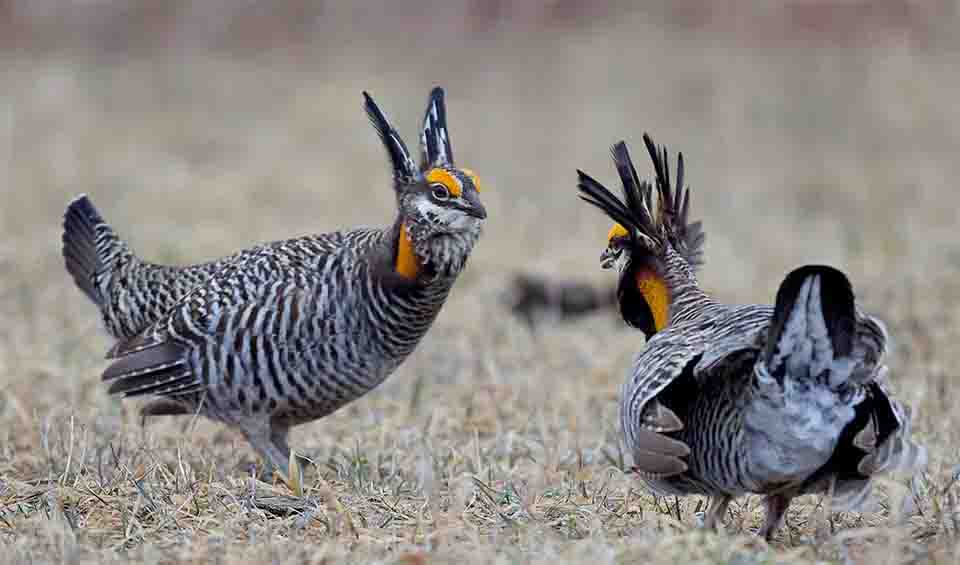Tympanuchus – Prairie-chickens
Known for their feathered throat sacs which they inflate during courtship displays
These birds, commonly known as prairie chickens, are native to North America and are primarily found in the grasslands of the United States. However, their numbers and range have diminished significantly over the years.
One of their most striking features is their elaborate courtship displays, a hallmark of prairie chickens. During the breeding season, males gather on display grounds known as leks, performing intricate dances and vocalizations to attract females. These displays involve inflating bright orange air sacs on their necks, stamping their feet, and making a variety of sounds, including booming calls that can be heard over long distances. This mating ritual not only attracts females but also establishes dominance hierarchies among the males.
Prairie chickens are medium-sized birds with robust and rounded appearances. They have a mixture of brown and white feathers that provide excellent camouflage in their natural prairie habitat. The males are generally larger and more vividly colored than the females. Their diet primarily consists of seeds, insects, and green vegetation, which varies seasonally depending on availability.
Tympanuchus species are specially adapted to life in the open prairie. Their coloring blends into the tall grasses, and their wide, strong feet are designed for walking through thick grass. Despite these adaptations, prairie chickens are vulnerable to numerous threats, including habitat loss, fragmentation of their environment due to agricultural development, and severe weather conditions. Conservation efforts are crucial for their survival, involving habitat restoration and management programs to preserve the remaining grasslands.
A fun fact about Tympanuchus is the cultural significance of the prairie chicken dances to many Native American tribes, who imitate the birds’ dances in their traditional ceremonies. These dances are not only a form of artistic expression but also a way to honor the bird’s role in the ecosystem.
Species in this genus
Sharp-tailed grouse
It’s a bit like a chicken, but with longer, pointed tail feathers


